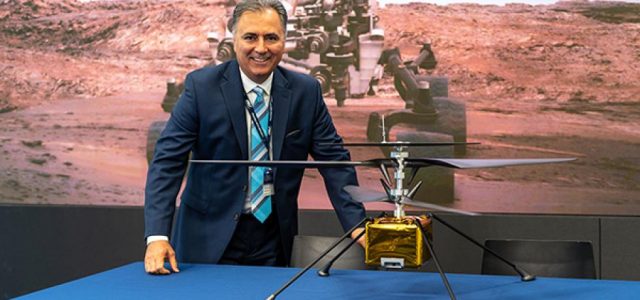Monrovia, California-based AeroVironment, which has built everything from a hummingbird-sized drone to high-flying solar aircraft, has built components for a new drone helicopter intended to fly much further afield: across the surface of Mars.
AV is working with NASA’s Jet Propulsion Laboratory in Pasadena to build the helicopter recently selected by the Mars Exploration Program, which is planned to fly across the Red Planet in less than three years.
“AeroVironment’s deep, rich and diverse history of innovation, combined with our experience with near-space aircraft like Pathfinder and Helios make us uniquely suited to collaborate with NASA and JPL on this historic, interplanetary venture,” says Wahid Nawabi, AeroVironment’s president and CEO.
Mars’ surface has about the same air density as flying at 100,000 feet on Earth, so the company used design principles and simulation tools from its experience building high-altitude, long-duration aircraft and incorporated them into the helicopter’s design.
“The Mars Helicopter effort also benefits from the ultra-lightweight and ultra-high-precision methods integral to our nano projects that have been developed in our MacCready Works laboratory, where we’ve assembled a dedicated team of the industry’s brightest and most experienced thinkers to solve some of today’s greatest technological challenges,” Nawabi says.
AeroVironment tested helicopter prototypes and delivered to NASA a rotor and landing-gear prototype in May 2016, which demonstrated that free flight in a simulated Mars atmosphere was possible. Major subsystems were delivered in the fall of 2017 and integrated into two engineering development models. Its rotor, landing gear, fuselage shell and solar panel substrate were integrated with JPL-developed fuselages that included avionics, power, communications systems, flight controls and sensors.
One test model was used for flight demonstration and the other was used for environmental testing to make sure the final design could stand up to the harsh environment of Mars.
AeroVironment is now building the flight version of its subsystems, which will be integrated with other subsystems into the final helicopter, which JPL is putting together. The finished helicopter will be carried to a martian landing site on the Mars 2020 rover.



















